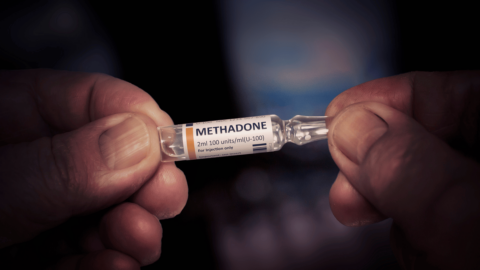For those ready to break free of opioid dependence, buprenorphine and methadone are two medications with stellar track records of helping people manage withdrawal and cravings. While both are effective, they work in unique ways, and knowing their differences can help you and your healthcare provider decide on the best path forward.
In this article, we’ll break down the strengths and weaknesses of each option and explore how Suboxone, a combination of buprenorphine and naloxone, brings together the best of both worlds.
Whether you’re considering the structured support of methadone or the flexibility of buprenorphine, having a clear understanding of these treatment options is crucial in making an informed and empowered choice.
How Do Buprenorphine and Methadone Work?
Buprenorphine and methadone work to calm cravings by interacting with the brain’s opioid receptors, but they do so in different ways. Here’s a look at how each medication functions:
- Methadone is a full opioid agonist, meaning it fully activates opioid receptors in the brain. This makes it highly effective for reducing cravings and withdrawal symptoms, especially in people with a long history of opioid use or severe dependence. But because it’s a full agonist, methadone carries a higher risk of dependence and overdose if not carefully managed.
- Buprenorphine is a partial opioid agonist. It attaches to the same receptors but only partially activates them, which reduces cravings and withdrawal symptoms with a lower risk of misuse or overdose. Buprenorphine’s “ceiling effect” limits its potency at higher doses, creating a safety buffer that can make it a safer choice for at-home use.
Managing Withdrawal Symptoms and Cravings: Comparing Buprenorphine and Methadone
Both medications are highly effective in helping patients get through the early, challenging phases of withdrawal.
But they differ in strength, accessibility, and how they’re administered:
Methadone: Strong, Clinic-Based Treatment
- Powerful Symptom Relief: Methadone’s potency makes it ideal for individuals with severe opioid dependence, providing long-lasting relief from withdrawal symptoms.
- Structured Support: Methadone is administered in licensed clinics, meaning patients have daily supervision. This structure can be helpful for those who need regular support and accountability as they begin recovery.
However, visiting a clinic daily can be a barrier for some, particularly those with demanding schedules or limited access to a nearby clinic.
Buprenorphine: Flexible and Effective at Home
- Safe, Effective Relief: Buprenorphine’s partial agonist profile provides substantial symptom relief with a lower risk of overdose.
- At-Home Option: Buprenorphine can often be taken at home, allowing for flexibility. With telemedicine services like QuickMD, patients can even have virtual appointments, making buprenorphine highly accessible.
For people who want a safe, effective treatment they can manage from home, buprenorphine offers a good balance of freedom and efficacy.
The Benefits and Drawbacks of Each Medication
Methadone’s Advantages and Disadvantages
- Pros: Methadone is especially effective for those with a high level of dependence, and clinic-based support provides daily structure and oversight.
- Cons: Methadone’s full agonist status raises the risk of overdose, and daily clinic visits may be a barrier for those who prefer more privacy or have limited access to treatment centers.
Buprenorphine’s Advantages and Disadvantages
- Pros: Buprenorphine’s lower overdose risk, combined with the flexibility of at-home use, makes it a popular choice for people seeking a safer, discreet option.
- Cons: It may not be strong enough for people with severe opioid dependence who need intense, full-strength relief, especially in the early stages of treatment.
Suboxone: The Best of Buprenorphine with Extra Protection
For many people, Suboxone offers a valuable balance of effectiveness and safety. Suboxone combines buprenorphine with naloxone, an opioid antagonist that discourages misuse. Here’s how this combination makes Suboxone a unique and potent option:
- Buprenorphine provides effective relief by partially activating opioid receptors, curbing cravings, and managing withdrawal symptoms.
- Naloxone adds an extra layer of safety. If Suboxone is used as directed (dissolved under the tongue), naloxone has no effect. But if someone tries to misuse it (such as by injecting), naloxone will block the opioid receptors, preventing a high and making misuse much less likely.
Suboxone’s combination of buprenorphine and naloxone offers the benefits of a potent treatment while reducing the risks associated with opioid medications. This makes it an ideal choice for those who want flexibility in treatment without sacrificing safety.
Deciding Which Option Is Right for You
Whether you’re drawn to methadone’s strong, supervised structure or the flexibility of buprenorphine or Suboxone, here are some factors to consider:
- Severity of Dependence: For severe dependence, methadone may be more effective. For moderate dependence, buprenorphine or Suboxone may be enough to manage symptoms safely.
- Need for Structure: If daily accountability and support are important, methadone’s clinic setting can be helpful. For those who value independence, at-home buprenorphine or Suboxone could be the better choice.
- Lifestyle and Accessibility: Buprenorphine’s ability to be prescribed virtually through services like QuickMD allows for convenient, private treatment from home.
Ready to Start Treatment? Consider Suboxone with QuickMD
If you’re considering buprenorphine for opioid dependence treatment, Suboxone offers a balanced approach that combines effectiveness with a high safety profile. With QuickMD’s telemedicine services, you can connect with a licensed provider online, receive a quick, confidential consultation, and, if appropriate, get a Suboxone prescription to manage your recovery from home.
Learn more about buprenorphine and Suboxone through QuickMD and start your journey toward recovery in a way that’s safe, convenient, and fits your needs. Recovery is a personal journey, and QuickMD is here to make it accessible, effective, and supportive every step of the way.




